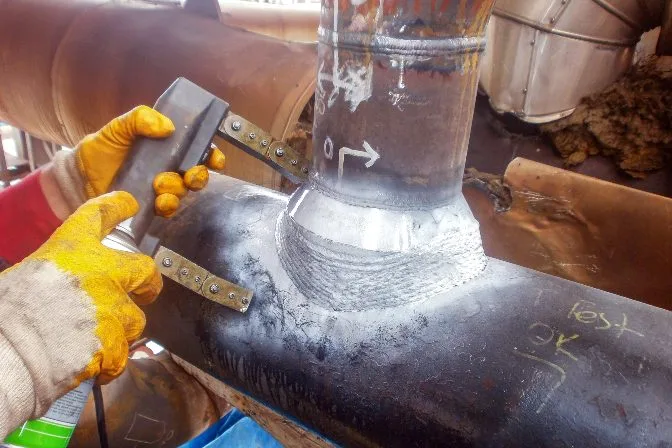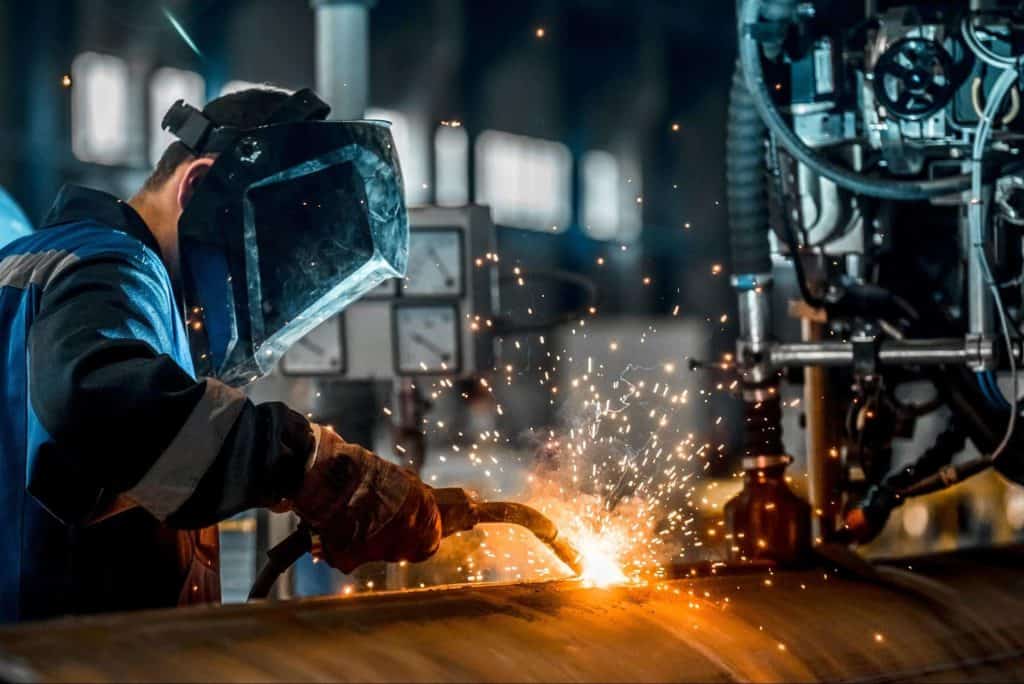Premier Houston Welding Inspection Solutions for Industrial Standards
Premier Houston Welding Inspection Solutions for Industrial Standards
Blog Article
A Comprehensive Overview to Comprehending Exactly How Welding Evaluation Works: Strategies, Criteria, and Ideal Practices for Top Quality Assurance in Metal Construction
Recognizing the details of welding assessment is crucial for maintaining the stability of metal construction. Implementing ideal techniques can significantly improve top quality assurance actions. The landscape of welding evaluation is not without its difficulties.
Value of Welding Inspection
Although welding is an important procedure in various markets, its integrity straight influences the safety and efficiency of structures and parts. Efficient welding assessment is essential for identifying issues that might compromise the high quality and resilience of welded joints. This process makes sure adherence to developed requirements and specs, which are important for keeping structural stability and operational dependability.
Welding examination serves several objectives, consisting of validating that the welding procedure has been carried out correctly, assessing the high quality of materials used, and validating that the ended up item satisfies regulatory and market criteria (Houston Welding Inspection). Through rigorous assessment, prospective concerns such as porosity, splits, and incomplete combination can be spotted early, avoiding costly fixings and alleviating safety dangers
Moreover, consistent welding examinations foster self-confidence amongst stakeholders, consisting of designers, clients, and governing bodies, by showing a dedication to quality guarantee. The value of welding assessment can not be overemphasized; it is important not just for conformity with legal demands yet also for boosting the general performance of welded structures. Inevitably, a durable welding examination program is a positive action that safeguards against failures, making certain the durability and reliability of bonded parts in their desired applications.
Usual Welding Examination Methods

Visual examination is the initial line of defense, allowing assessors to recognize surface flaws such as fractures, undercuts, or insufficient fusion. Radiographic screening utilizes X-rays or gamma rays to reveal internal flaws, making it optimal for complicated welds. Ultrasonic testing uses high-frequency audio waves to discover subsurface issues, providing precise measurements of weld integrity.
Magnetic bit testing works for ferromagnetic materials, highlighting surface and near-surface interruptions when particles are related to an electromagnetic field. On the other hand, color penetrant screening utilizes a liquid color to reveal surface-breaking defects, guaranteeing that even the smallest imperfections are discovered.
Each technique has its restrictions and toughness, often necessitating a mix of techniques for extensive evaluation - Houston Welding Inspection. By using these inspection techniques, quality assurance in metal construction is attained, guaranteeing that welded frameworks fulfill safety and efficiency standards
Industry Criteria for Welding

The American Welding Society (AWS) and the American National Specification Institute (ANSI) are two popular companies that develop welding standards. AWS D1.1, as an example, describes the requirements for welding steel structures, while AWS D1.2 concentrates on aluminum. Internationally, the ISO 3834 standard addresses quality requirements for blend welding, providing a structure suitable throughout national borders.

Best Practices for High Quality Assurance
Quality guarantee in welding is paramount view to accomplishing secure and sturdy building and constructions. Applying best techniques makes sure that every weld meets the called for specs and standards. Initially, establishing a thorough high quality management system (QMS) tailored to the certain welding task is necessary. This QMS needs to define procedures, functions, and obligations to mitigate risks and boost accountability.
Normal training and qualification of welding workers are important for preserving a knowledgeable workforce. Continual education on the most up to date welding methods and innovations makes sure that assessors and welders are well-informed regarding current requirements and techniques.
In addition, carrying out pre-weld inspections to review materials and tools can protect against defects before they occur. Houston Welding Inspection. Throughout the welding process, real-time surveillance and documents of welding specifications assist determine disparities promptly. Post-weld assessments ought to involve thorough exams utilizing non-destructive screening (NDT) techniques to guarantee the integrity of the welds
Furthermore, preserving clear interaction among employee advertises a culture of quality. Normal audits and evaluations of the welding process assistance determine locations for enhancement. By adhering to these finest methods, companies can accomplish ideal quality assurance, inevitably resulting in boosted security and efficiency in metal fabrication projects.
Obstacles in Welding Evaluation
Although welding assessment is important for ensuring architectural integrity, it presents a variety of challenges that can make complex the analysis procedure. One significant obstacle is the irregularity in welding strategies and materials made use of, which can impact the consistency of weld top quality. Different welders might use differing techniques, leading to discrepancies that inspectors requirement to determine and evaluate.
An additional obstacle entails the detection of flaws. Non-destructive testing (NDT) methods, such as ultrasonic and radiographic testing, can be complex and require skilled specialists to translate results properly. Incorrect positives or downsides can take place, possibly leading to expensive rework or compromised safety.
In addition, the presence of environmental elements, such as temperature level and moisture, can affect the stability of welds and the performance of assessment strategies. Assessors have to also navigate the regulative landscape, making certain conformity with sector criteria, which can vary by territory and application.
Final Thought
To conclude, welding assessment these details plays a crucial function in making sure the integrity and safety of metal construction. Utilizing a range of inspection techniques, sticking to well established market criteria, and carrying out reliable quality monitoring techniques jointly enhance the reliability of bonded frameworks. Despite the challenges faced in the examination procedure, a dedication to constant enhancement and adherence to best practices can considerably bolster the quality guarantee framework, promoting greater More hints confidence among stakeholders in the welding sector.
Effective welding inspection is essential for recognizing problems that could compromise the top quality and toughness of bonded joints.Additionally, constant welding inspections foster self-confidence amongst stakeholders, including engineers, customers, and regulative bodies, by showing a dedication to top quality assurance.The American Welding Culture (AWS) and the American National Standards Institute (ANSI) are two famous organizations that establish welding criteria. During the welding process, real-time surveillance and documents of welding criteria help recognize incongruities right away. Regardless of the challenges dealt with in the examination procedure, a commitment to continuous improvement and adherence to best methods can dramatically reinforce the high quality assurance structure, fostering higher self-confidence among stakeholders in the welding market.
Report this page